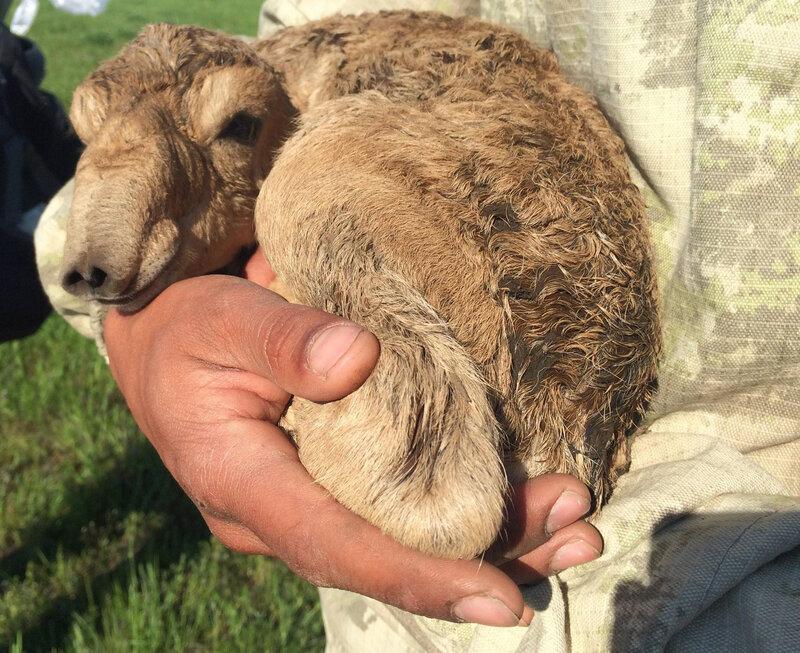 |
| A vast number of saiga antelopes lying dead in central Kazakhstan in May 2015. |
In 2015, it was reported that more than 200,000 saiga antelopes suddenly died in central Kazakhstan as a result of a bacteria called Pasteurella multocida type B. But now, a new study has indicated that the bacteria was already present in the antelopes and was provoked due to a period of strange weather. The mass mortality event was witnessed by Dr. Richard Kock, a professor of wildlife health and emerging diseases at the Royal Veterinary College, who indicated that the animals died as a result of hemorrhagic septicemia which was caused by the bacteria. However, only 30,000 of the antelopes survived such a catastrophic event. This indicates that the bacteria itself was not enough to explain the die-off. A recent paper published in Science Advances showed that majority of the adult antelopes already had the bacteria in their bodies and a ten-day period of strange heat and humidity triggered the bacteria to breed rapidly and ultimately kill the antelopes at the same time. The authors of the paper created models that looked two other extinction events - one in 1981 and another in 1988 - where the antelopes are also thought to have died because of hemorrhagic septicemia. It analyzed environmental factors such as rainfall, temperature, wind, and vegetation state. According to Dr. Kock, the ten-day period consisted of extremely high levels of humidity per day and because the bacteria is concentrated in the animals' tonsils, they are quite close to air and therefore respond to that change in atmosphere by increasing rapidly. He further added that the 30,000 antelopes which survived mass fatality event was because they were out of the "climate envelope." That is, male bachelor saigas moved further up north where humidity levels were lower, while some females stayed in smaller groups in desolate areas. Although the antelopes are now rebounding and breed quickly, it is unclear whether they could survive a similar event.
 |
| A newborn saiga calf |
I think this mass catastrophic event in 2015 may be related to climate change. That is, climate change is known to cause changes in weather patterns and often these changes can have a life-threatening impact on various species. These saiga antelopes succumbed to climate change when the bacteria in their bodies responded to the change in weather patterns by rapidly multiplying and ultimately killing the animals. I really believe that the public should wake up and put the issue of climate change into great consideration and take action. Saiga antelopes are not the only animals that have become victims and casualties to such an environmental catastrophe. Dr. Kock pointed out that there is proof that changes in weather patterns could be having similar effect on other animals, such as musk ox and reindeer. I really think it is highly crucial that scientists and researchers should thoroughly study Pasteurella multocida, in order to come up with some kind of a solution to combat this bacteria so that the world's remaining saiga antelopes do not fall victims to such environmental catastrophes. This includes determining what percent of the global population has the bacteria and what percent doesn't. Similar measurements should be implemented to save other animals which are found to be affected by unusual weather patterns.
View article here
No comments:
Post a Comment